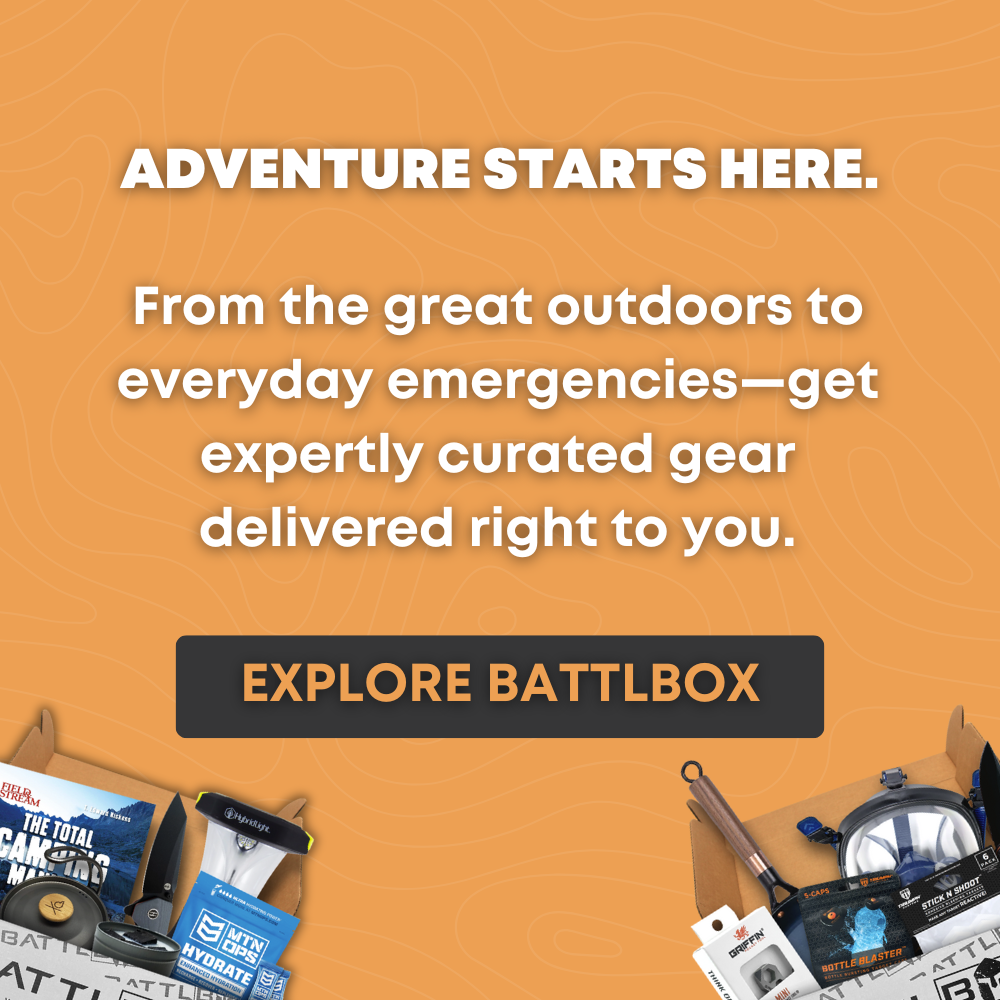Battlbox
What to Eat During Nuclear Fallout: A Comprehensive Guide
Table of Contents
- Introduction
- Understanding Nuclear Fallout
- What Foods to Stockpile
- Preparation Techniques
- The Role of Emergency Preparedness
- Conclusion
- FAQ
Introduction
Imagine a world where the sky darkens with ash, and the air is filled with uncertainty. In the face of potential nuclear fallout, the importance of preparedness cannot be overstated. With the threat of nuclear conflict looming in the modern era, understanding what to eat during nuclear fallout has become an essential topic for survivalists and concerned citizens alike.
Nuclear fallout refers to the radioactive particles that fall to the ground following a nuclear explosion. These particles can contaminate food supplies and pose significant health risks if ingested. The consequences of nuclear warfare would not only devastate infrastructure but could also lead to widespread famine and disease.
This blog post aims to equip you with vital knowledge on food safety during nuclear fallout, highlighting the best food options, storage techniques, and preparation methods. By the end of this article, you will have a clearer understanding of what to stockpile, what to avoid, and how to navigate the challenges posed by nuclear aftermath.
The Importance of Food Safety in Nuclear Fallout
Food safety during nuclear fallout is crucial for survival. The consumption of contaminated food can lead to serious health issues, including radiation poisoning and long-term health effects such as cancer. It is vital to recognize that not all foods will be safe to eat after a nuclear event.
The key to effective disaster preparedness lies in understanding the types of food that are resilient to contamination and can sustain you in dire circumstances. This guide will delve into various food options, safe storage practices, and the importance of having an emergency supply kit.
Understanding Nuclear Fallout
What is Nuclear Fallout?
Nuclear fallout refers to the radioactive dust and debris that settles to the ground after a nuclear explosion. This fallout can spread over vast areas, depending on wind patterns and weather conditions. Fallout contains various radionuclides, which are radioactive isotopes that can pose significant health hazards.
The severity of contamination will vary based on proximity to the explosion, the yield of the weapon, and environmental conditions. Understanding these factors is essential for making informed decisions about food safety.
Types of Radiation
Radiation can be categorized into three primary types: alpha particles, beta particles, and gamma rays. Each type has different properties and behaviors:
- Alpha Particles: These are heavy and positively charged. They cannot penetrate the skin but can be harmful if ingested or inhaled.
- Beta Particles: These are lighter and can penetrate the skin, causing potential harm. Like alpha particles, they pose a risk if ingested or inhaled.
- Gamma Rays: These are high-energy electromagnetic waves that can penetrate through most materials. They pose the greatest external exposure risk.
Understanding the nature of radiation can help you make informed decisions about food and safety measures in the aftermath of a nuclear event.
What Foods to Stockpile
Stockpiling food in preparation for nuclear fallout involves choosing items that have a long shelf life and are less likely to be contaminated. Here are some key categories of food to consider:
1. Canned Foods
Canned goods are among the safest options post-fallout. The canning process seals food in a protective container, making it largely impervious to external contamination. Here are some excellent choices:
- Vegetables and Fruits: Look for canned peas, corn, beans, peaches, and other fruits.
- Proteins: Canned tuna, chicken, and beans are excellent sources of protein.
- Soups and Stews: These are nutritious and can provide comfort during stressful times.
2. Freeze-Dried and Dehydrated Foods
Freeze-dried and dehydrated meals offer lightweight, long-lasting options that maintain their nutritional value. They require minimal preparation and can be rehydrated with water. Consider:
- Dried Fruits: Apricots, apples, and bananas can be a tasty snack.
- Meals: Look for options like freeze-dried pasta, rice dishes, and even complete meals tailored for emergency situations.
3. Grains and Legumes
Uncooked grains and legumes stored in airtight containers can be safe choices. They have a long shelf life and provide essential carbohydrates and proteins:
- Rice and Pasta: These staples can be prepared with minimal resources.
- Dried Beans and Lentils: Packed with protein and fiber, they are versatile and filling.
4. Root Vegetables
Root vegetables, particularly those stored in a cool, dark place, can last for months. They are less likely to absorb contamination from the soil compared to surface crops. Consider:
- Potatoes: A staple food that can be cooked in various ways.
- Carrots and Onions: These can add flavor and nutrition to meals.
5. Food in Shielded Areas
Food that has been stored in basements or underground shelters may be less likely to suffer contamination. If you have a secure location, stockpile items there to ensure their safety.
6. Water and Hydration Supplies
Water is crucial during any emergency. Ensure you have a sufficient supply of bottled water or a means to purify water from external sources.
- Water Filtration Systems: These can help make contaminated water safe to drink.
- Water Purification Tablets: Consider keeping these on hand for emergency situations.
Preparation Techniques
Safe Food Handling
When preparing food post-fallout, it's essential to prioritize safety:
- Wash Containers: Before opening canned goods, wipe the outside of the can to remove any surface contamination.
- Cook Thoroughly: Cooking food can kill bacteria but does not eliminate radiation. Ensure that food is heated to safe temperatures to reduce bacterial risks.
Decontamination
If you suspect that food has been contaminated with fallout, you can take steps to decontaminate:
- Rinse Vegetables: If you have fresh produce, rinse it thoroughly under running water before consumption.
- Peel Skin: For root vegetables, peeling can help remove any surface contamination.
Avoiding High-Risk Foods
Certain foods should be avoided in a fallout scenario:
- Fresh Produce: Plants grown in contaminated soil can absorb radioactive materials. It's best to avoid these until the area is deemed safe.
- Wild Game: Animals that have been exposed to contaminated vegetation may carry radiation, making them risky to consume.
The Role of Emergency Preparedness
Building an Emergency Supply Kit
An emergency supply kit is essential for surviving a nuclear fallout scenario. Here’s what to include:
- Non-perishable Food: Focus on canned goods, dried foods, and grains.
- Water: Store enough water for at least three days, ideally one gallon per person per day.
- First Aid Supplies: Include bandages, antiseptics, and any necessary medications.
- Emergency Radio: Ensure you have a battery-powered or hand-crank radio to receive updates.
Stay Informed
Monitor news and updates from reliable sources regarding the safety of food and water in your area. Being informed will help you make critical decisions about when it’s safe to venture outside and what foods are safe to consume.
Conclusion
In conclusion, knowing what to eat during nuclear fallout is a vital aspect of preparedness that can greatly influence survival. By stockpiling canned foods, freeze-dried meals, grains, and root vegetables, you can create a robust food supply that withstands the challenges of post-fallout living.
Remember that food safety is paramount; always prioritize items that are sealed or stored in shielded areas. Be proactive in building an emergency kit that includes not only food but also water and essential supplies.
As we navigate uncertain times, let’s embrace the spirit of readiness and fortify ourselves with knowledge. The Battlbox community stands committed to empowering individuals with the tools necessary for outdoor exploration and survival. For more resources, consider exploring Battlbox's Subscription Services, where you can find curated survival gear delivered to your doorstep.
FAQ
What types of food are safe to eat after nuclear fallout?
Canned foods, freeze-dried meals, grains, and root vegetables are generally safe to consume. Always clean the containers before opening and avoid fresh produce grown in contaminated soil.
How long will food supplies last after a nuclear event?
The longevity of food supplies depends on the storage conditions and type of food. Canned goods can last for years, while dried foods also have a long shelf life.
Can I grow food after nuclear fallout?
It's advisable to avoid growing food in contaminated soil for several months following a nuclear event. The safety of homegrown produce depends on the level of radiation in the area.
How can I ensure my water supply is safe?
Store bottled water and consider investing in water purification systems. If you must use external sources, always filter and purify the water before drinking.
What should I include in my emergency supply kit?
An effective emergency supply kit should include non-perishable food, bottled water, first aid supplies, hygiene products, and a battery-powered or hand-crank radio.
By arming yourself with knowledge and preparedness, you can face the challenges of any disaster with confidence and resilience.
Share on:








